Affiliate links on Android Authority may earn us a commission. Learn more.
After years of failing to learn languages on Duolingo, I switched to Memrise
Published onMarch 30, 2023
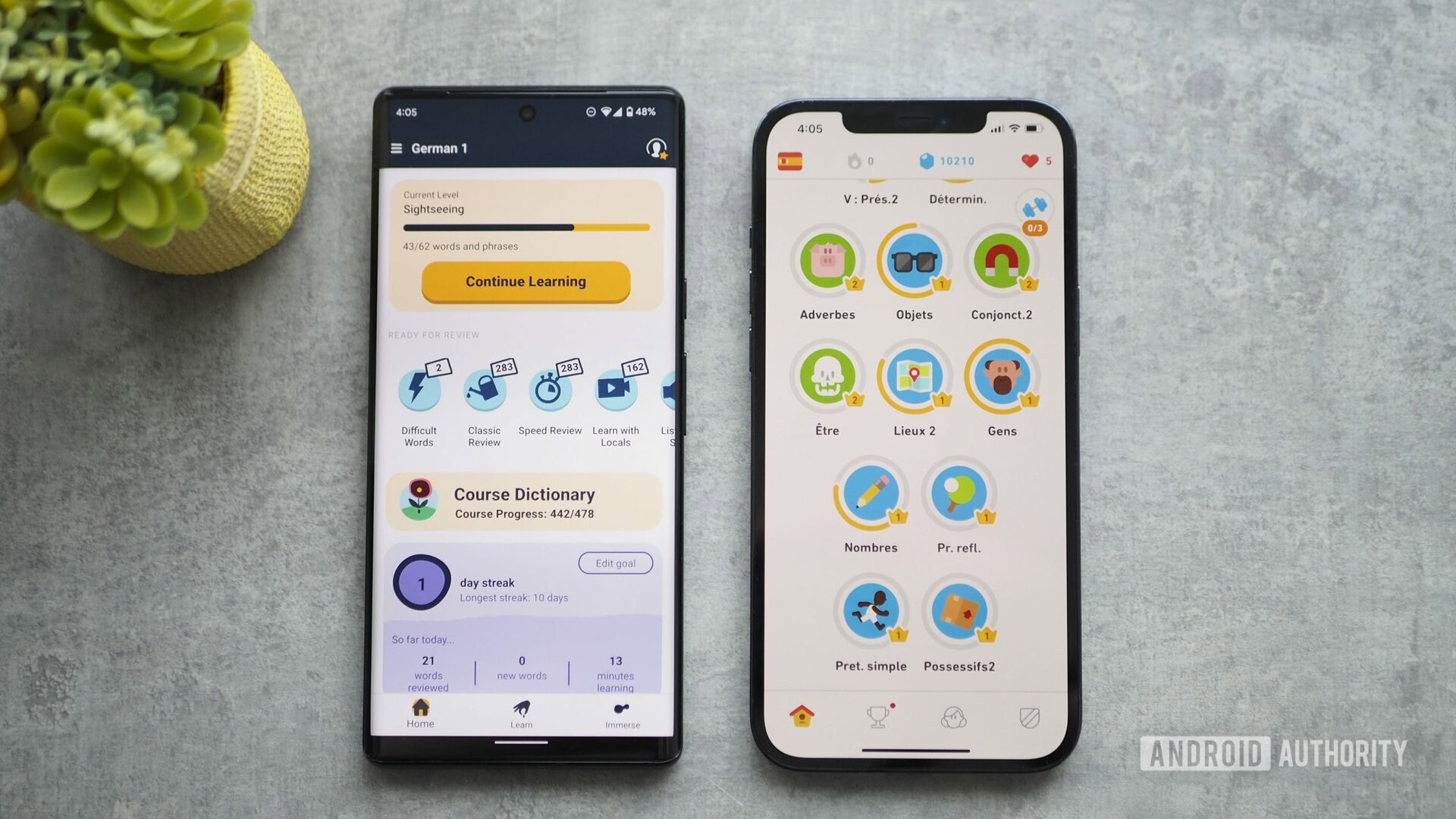
I grew up as a trilingual person, speaking Arabic natively, French quasi-natively, and English since I was eight years old. I was pretty happy with this versatile knowledge until I met my husband and he started teaching me some basic Spanish too. I spent a few months parsing Spanish organically — it’s relatively easy if you already speak French and someone explains to you the basic rules. Then I graduated to Duolingo to (supposedly) take my language learning to the next level. I gave the app try after try, but the end result is non-equivocal: Duolingo doesn’t work for me. So I moved my language learning to Memrise and I have nothing but positives to say about it.
Have you used a free language-learning app?
Why Duolingo’s methods failed me
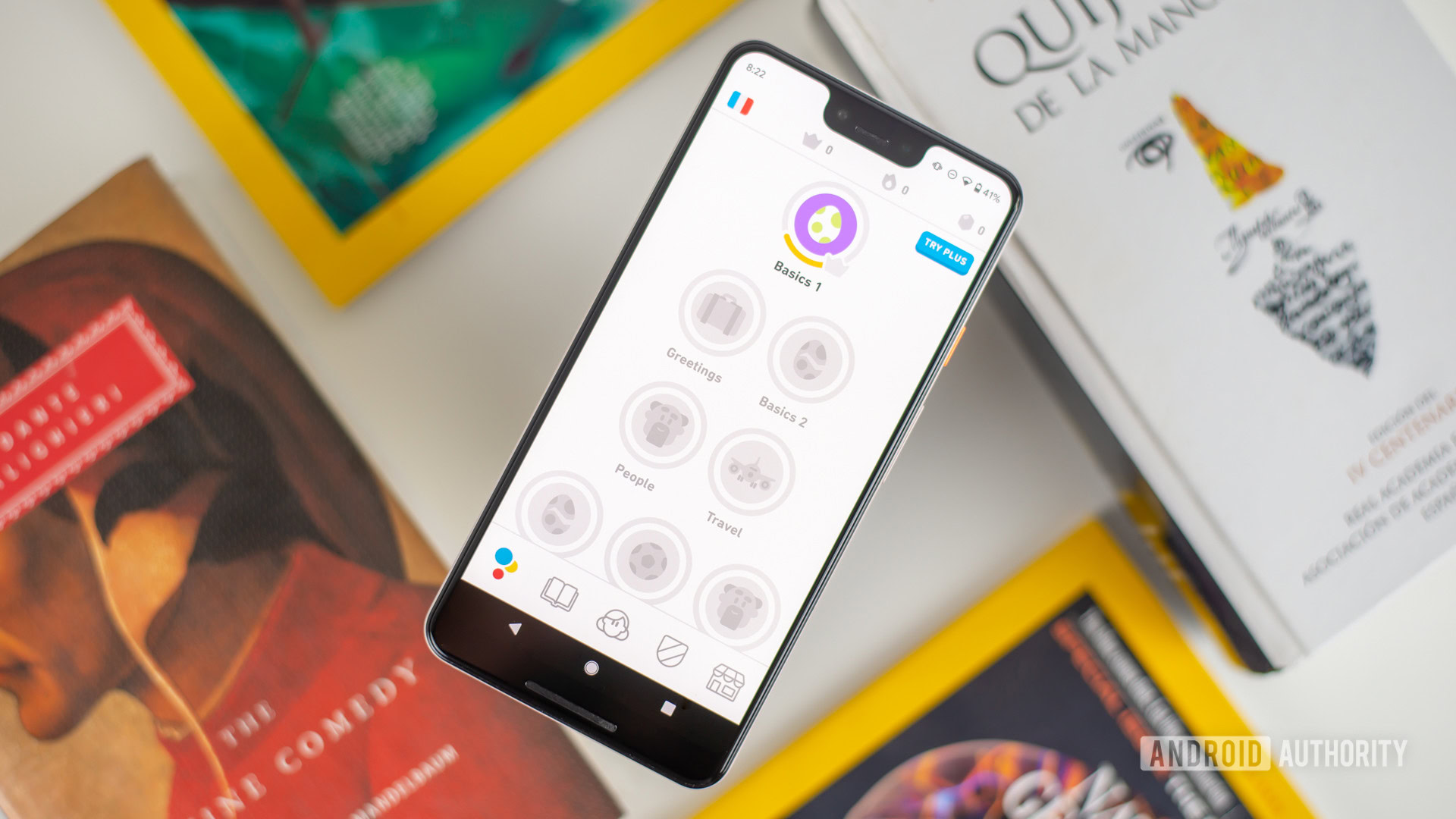
Duolingo’s boring, useless, repetitions irked me. I swear I have learned that “mujer” means woman. Duolingo doesn’t care. The gamification-centric system wants me to come back every day and repeat the same exercises again and again until I reach a new level. Only then can I unlock more lessons.
Duolingo’s learning path is also geared toward pointless sentences that I won’t ever use. Things like “the cats drink milk” or “the monkey eats an apple.” When would I ever say that? (It’s worth noting that I’ve only tried a few Duolingo courses, namely French-Spanish, English-Spanish, English-German, and French-Italian, so things may be different with other language combinations.)
Duolingo was hellbent on teaching me useless sentences about cats and apples.
Despite the boredom and lack of motivation I was feeling, I kept coming back to Duolingo and giving it my best shot. I failed repeatedly. Until I decided to see what other language-learning apps were out there.
Memrise’s language learning approach is different
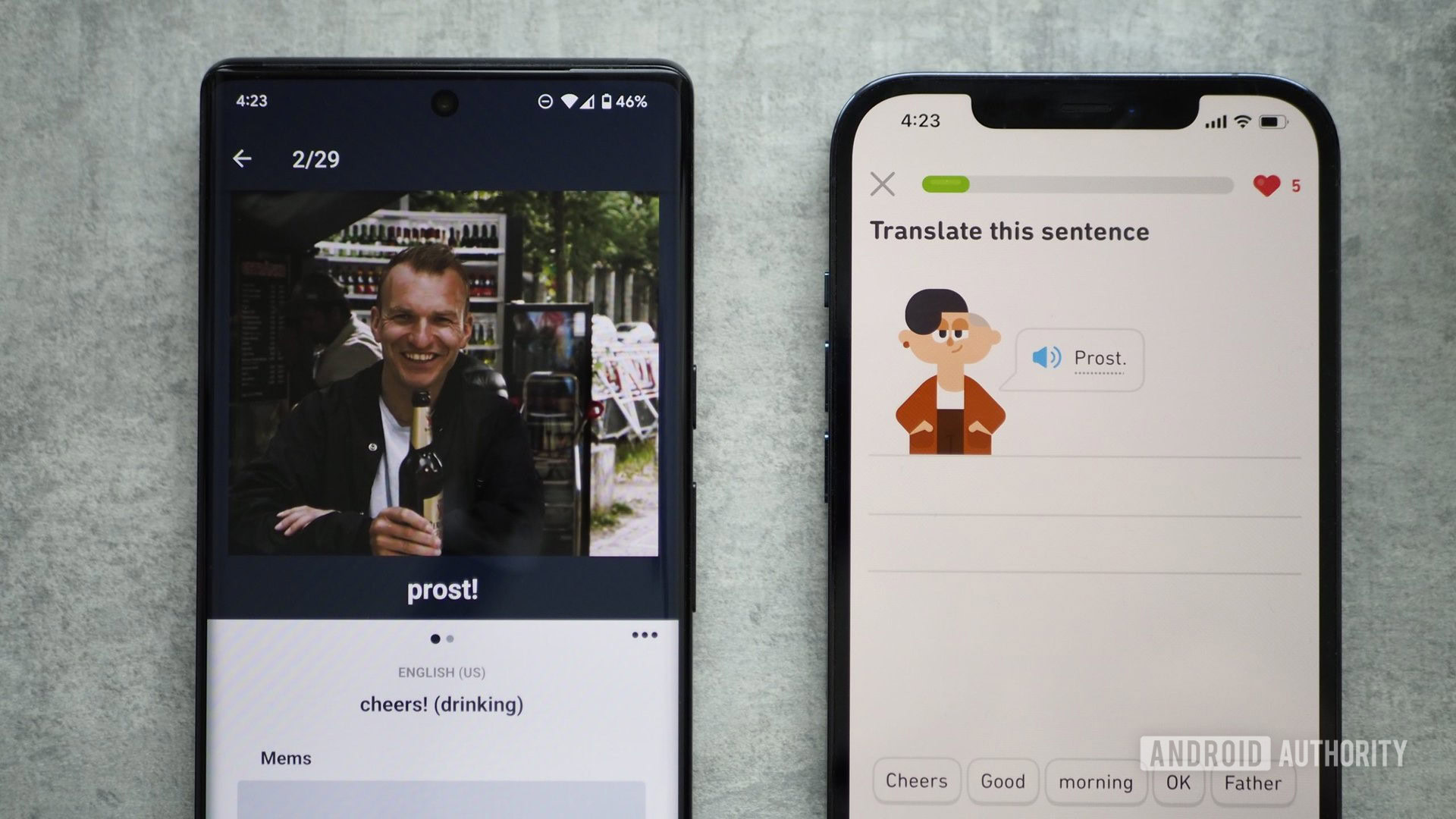
After a few misses, I landed on Memrise staring at an English-German course while shrugging and thinking, “Well, how bad could it be?”
Not bad. Not at all. Actually, surprisingly excellent. 10 minutes in, I had learned a few words, and I was watching a video trying to pick those words in the middle of a conversation. The next day, I came back for a second session, then the day after that, and the one after that.
In less than a week, I had a very basic understanding of the German language.
In less than a week and with only 15 to 20 minutes per day on my Android phone, I had a (very) general understanding of the German language — something I never felt after countless and countless hours on Duolingo. I kept using Memrise for a few more weeks and finished the first German course. I also started learning a bit of Italian, because why the heck not? Some personal circumstances meant that I had to stop language learning for a couple of months but after this sabbatical, I got back to Memrise and realized two things: One, I still remembered almost everything I’d learned and two, certain aspects of the app had gotten even better.
The first thing I had noticed about Memrise when I first tried it was the “I already know this” button when introducing new words. Tap it and the app will consider it a known word and skip it (unless you’re reviewing). Additionally, at any point, you can mark words as known or difficult, then choose to review learned words or continue learning new ones, thus progressing at your own rhythm. No need to pointlessly repeat “danke” and “guten morgen” a hundred times.
To combat boredom, Memrise uses fewer repetitions, videos of locals, adaptable learning, and multiple quizz methods.
The second thing that struck me is how Memrise goes about teaching you words and expressions. It uses matching games, writing challenges, and pronunciation tests. The best bits are the short videos of locals pronouncing words in addition to the text-to-speech voice, and boy is there a difference between the two! Locals speak faster, smoother, and skip or mix some letters together, while the robotic pronunciation is slower and more articulate. I’m learning how German is really spoken, which is infinitely more useful when trying to understand an actual human being.
Memrise also provides a literal word-for-word translation for every expression. For example, many of us know that “Gesundheit” means “bless you,” but did you know that the literal translation is “health?” Word for word, “es ist leider nichts mehr frei” translates to “it is unfortunately not more free” but is used to convey that a place is fully booked up. Take your time to check these literal translations while learning expressions and you’ll quickly expand your vocabulary and grammar without realizing it.
Better yet, the courses focus on tourist-friendly expressions first like “what’s the Wi-Fi password” and “where are you from?” instead of ducks eating apples. There are grammar rules and lessons too, which helped me understand sentence structure from the beginning, instead of guessing them as time goes on.
The extra feature that sets Memrise apart
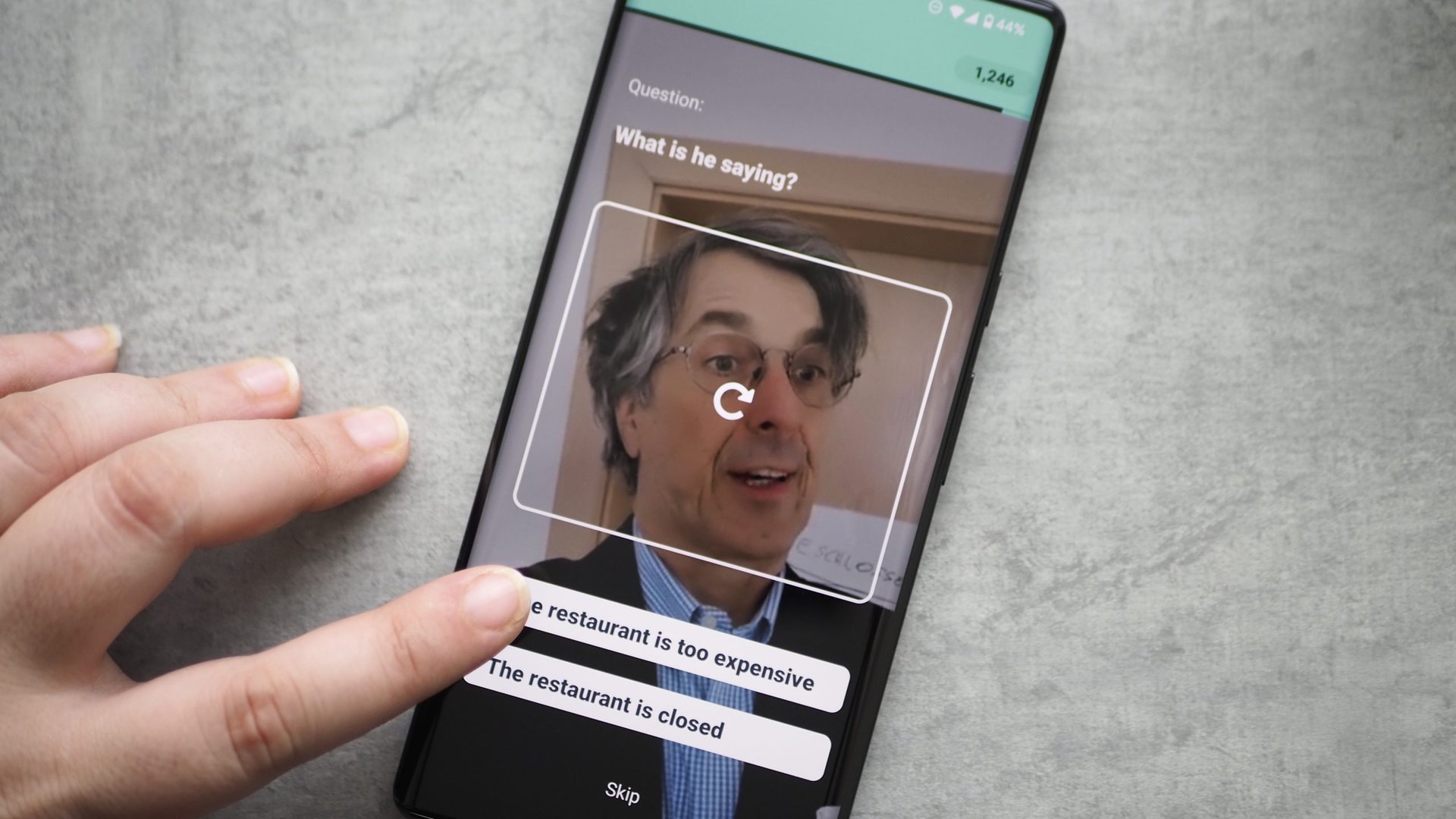
The one feature that made me fall in love with Memrise is the immersive video section. It’s sadly not available for all languages, but when it is, it makes a world of difference. In it, you watch short 10- to 15-second TikTok-style videos where locals have a fake conversation with themselves (but dressed differently). It’s a bit difficult to explain, but the amateur acting, the props, and the situations; all of it is cute and funny. You’re not supposed to understand everything, but you’re supposed to catch whether a character should go left or right, whether they like sushi or pizza, whether they’re a local or they came from the US, and so on.
Memrise's super fun TikTok-style immersion videos increased my confidence in the words I'd learned.
The app is banking on your understanding of context and your ability to pick up the words you already learned. And it works beautifully. Even from the first video, I was able to catch the situation and answer correctly despite only knowing a few words at the time. This forced me to rethink my entire language-learning strategy: Instead of focusing on individual words like Duolingo does, I felt more confident that I could understand real people in real situations.
As I said, this immersion mode is available in English to German, but I haven’t seen it in a few other courses. It’s a shame because it really makes the app infinitely funner and more useful.
After a month, I traveled to Berlin and was amazed by how much German I could understand.
After less than a month with Memrise at 10 to 15 minutes per day, I traveled to Berlin and was amazed by how much ambient German I understood. I wasn’t speaking the language fluently, obviously, but I could grasp the general meaning of conversations, announcements, and ads everywhere around me. A few months earlier, I’d been to Köln and hadn’t gotten a single word besides “bitte” and “guten morgen,” so I can fully credit Memrise with all of this improvement.
A few months later, in the middle of my language-learning sabbatical, I visited Berlin again for work and, once again, realized how useful the app had been. Despite my lack of continued studying, I was still able to make light conversation and understand a lot of context everywhere around me. Oh and I even helped a lost tourist in Paris once, even though he only spoke and understood German.
What are the disadvantages of Memrise?
Like any app, though, this one isn’t perfect. When I first started using Memrise, it took me a while to understand how to skip reviews to learn more words or how to see the list of words and expressions I’d already learned. But the app has made great strides since then. New users will see a whole new interface (pictured in the screenshots above) that changes everything. No more confusing UI, arbitrary courses for each language, or hidden review menus. You pick the language first and from the home screen, you can quickly choose whether you want to continue learning or review. There’s one list of lessons per language that you can filter by topic if you need to speed up your learning of business or relationship vocab, for example.
Sadly, the new interface isn’t yet available for existing users unless they sign up for Memrise Early Access and sacrifice a few features along the way — streaks, stats, community courses, and it seems that the TikTok-style videos aren’t working on Android in Early Access.
I’m also annoyed by the lack of a search function. I’d like to look for “noch” and see all the expressions it showed up in, for example. Plus, I noticed that some languages don’t get the royal treatment like the English-German course does; they have fewer local videos and no TikTok-style fun quizzes.
My biggest issue with Memrise is that it's mostly a glorified flashcard app.
And finally, I think my biggest issue with Memrise is that it’s mostly a glorified flashcard app. The sentences and expressions it teaches you are static; there’s no impromptu shuffled-up learning. So, if the app teaches you “she looks like my sister,” you will have to infer what “he looks like my brother” will be based on your separate knowledge of the words “he” and “brother,” without ever coming across that particular sentence. If you’re good at dynamically parsing sentences on your own, Memrise’s flashcard approach won’t feel like a hindrance. But if you’re a by-the-book person, you might need an app that actively encourages you to mix and match words, and that can’t be done with a flashcard-based approach.
Luckily, Memrise is free to try (with ads), so you can test it and see if the language combo you’re interested in offers everything you need. A pro subscription unlocks an offline mode, the option to review difficult words, and a few other extras; it’s a neat addition, but by no means essential. In Early Access, though, the monetization system is a bit different: there are no ads, but the free lessons are limited and you need to subscribe to gain access to more of them.
Bonus: ChatGPT and Memrise
As part of the new Early Access program I mentioned above, you also get access to “MemBot,” a new ChatGPT-based conversational mode that lets you test your language-learning skills with an AI.
I never really used the chat feature of other language apps because I don’t feel confident enough in my skills and it feels awkward to talk to a stranger in a language I barely know. But when it’s basically a machine, I don’t mind that. There are real-life scenarios to get you started and some games to play. You can ask for a translation of any sentence MemBot sent you or a hint to continue the conversation.
For now, there are only a few missions and games with a limited number of messages per chat, but it’s a good start for a beta feature. And using a large language model like GPT-3 means you can say anything and still get an answer that fits the roleplayed scenario. That’s utterly cool. I hope that Memrise will develop this further and switch to the improved GPT-4 language model as well.
But is Memrise enough to master a language?
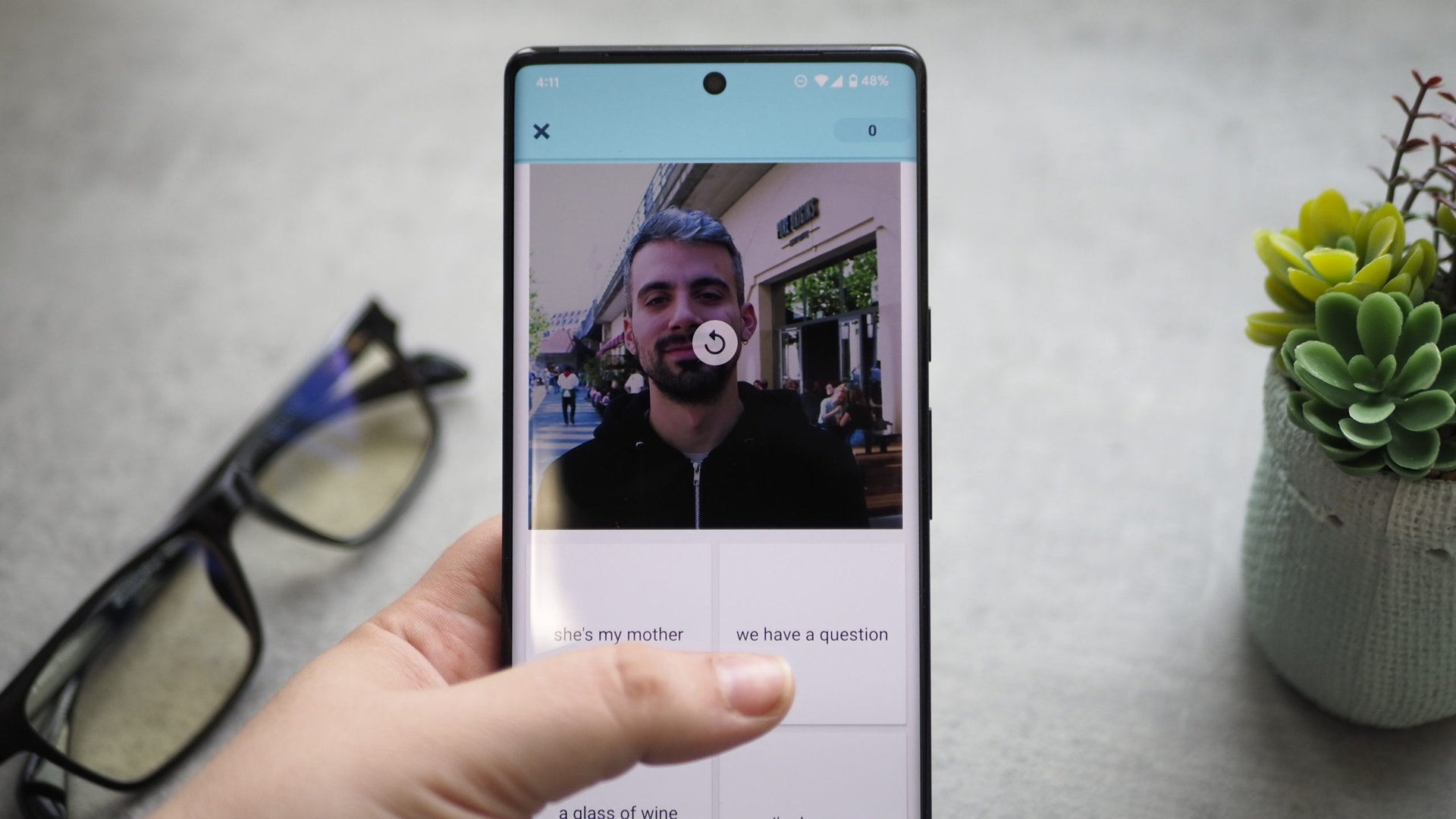
Perfection aside, though, Memrise has completely won me over. My two trips to Berlin and my learning sabbatical convinced me that this method of learning works very well for me. That’s why I came back to the app after my pause and why I wrote this article to share my experience with you. The app often gets overshadowed by its mammoth competitor, but I think it deserves to be acknowledged for its different methods and fun approach.
But is it enough? Can you become fluent with Memrise?
Honestly, if you’re serious about a language and want to become a fluent speaker, I don’t think Memrise is enough on its own. You’ll need a varied mix of learning methods like videos, podcasts, grammar lessons, and interactions with native speakers. In that context, Memrise can be an additional tool in your belt.
The return on investment with Memrise is incredibly high, unlike Duolingo.
But if you’re looking to quickly grasp the essentials of a language either for a short trip or out of sheer curiosity, then this should definitely be your go-to app. The return on investment, i.e. the number of useful words and language concepts you learn in a short period of time, is incredibly high, and it leaves Duolingo in the dust.